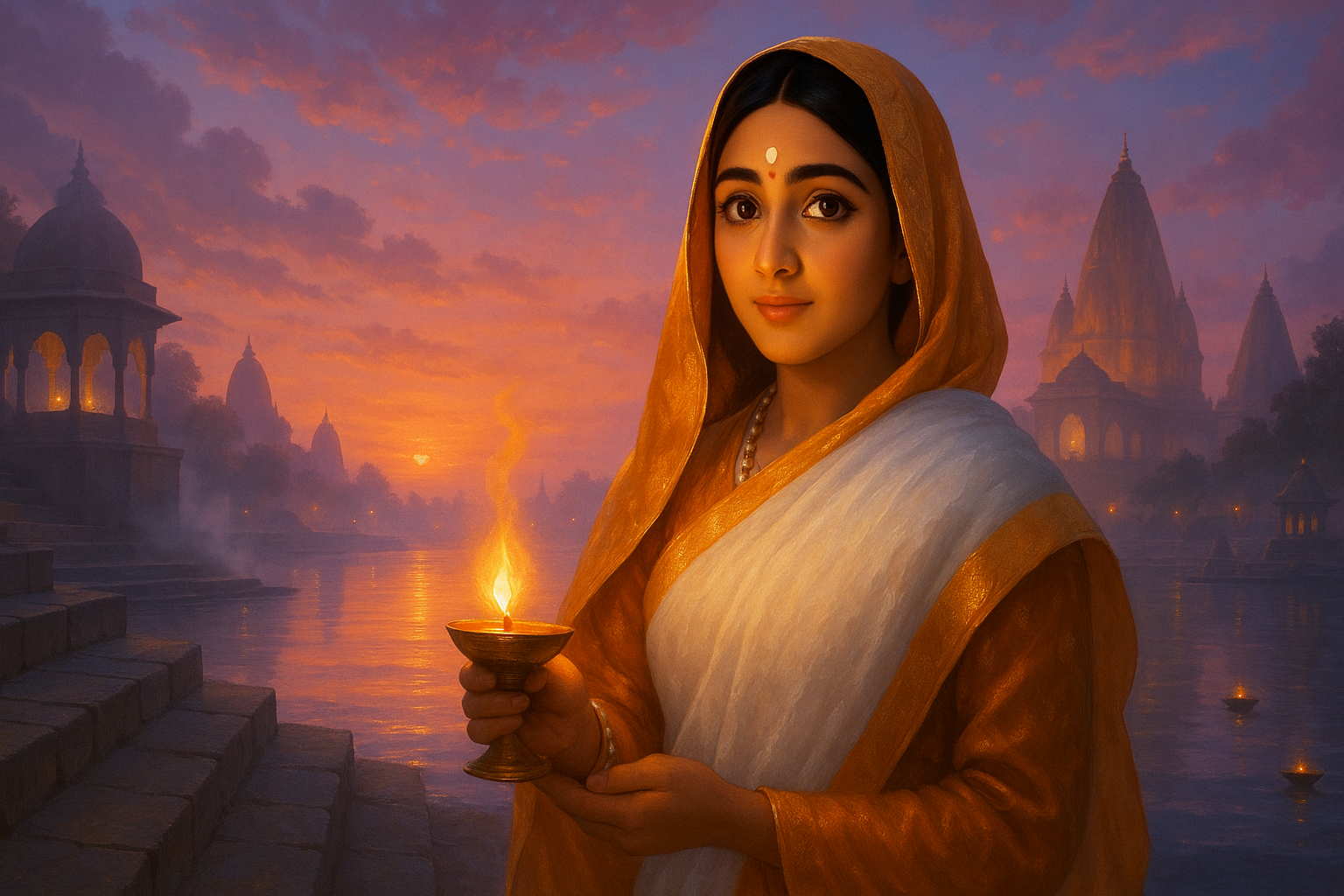In 1725, in the village of Chondi in Maharashtra, a little girl was born into a simple farming family. Her name was Ahilya.
No one could have imagined then that this quiet child would one day become one of India’s greatest rulers — a queen who built temples, roads, and cities, who governed with justice and heart, and whose reign would be remembered as a golden age of peace.
❝ In the welfare of my people lies my happiness.❞
The Call of Destiny
Ahilya’s life changed forever when Malhar Rao Holkar, the noble subedar of Malwa under the Maratha Empire, saw her at a temple in her youth. Impressed by her devotion and intelligence, he arranged her marriage to his son, Khanderao Holkar.
She entered the royal household of Indore — a new world, yet she carried into it the same humility and piety that marked her beginnings.
But fate would test her early.
From Grief to Greatness
In 1754, during the siege of Kumbher, her husband Khanderao was killed in battle. Widowed at just 29, Ahilya was inconsolable and resolved to join her husband on his funeral pyre, as was the custom.
But her father-in-law, Malhar Rao, stopped her. “You must live,” he said, “to serve and protect the people.”
She obeyed — not out of duty, but out of purpose. And when both her father-in-law and son died within years, Ahilya Bai rose to lead the Holkar kingdom herself.
❝ To suffer for duty is divine.❞
The Just Queen
In 1767, Ahilya Bai Holkar ascended the throne of Malwa. What followed was one of the most benevolent and visionary reigns in Indian history.
She ruled from Maheshwar, on the banks of the Narmada River, transforming it into a thriving center of culture, architecture, and trade. Her court was open not to flatterers, but to philosophers, saints, and poets.
❝ For me, governance was never about power — it was about service.❞
She personally led armies when her kingdom was threatened, yet she preferred peace over war. She resolved disputes with fairness, cared for widows and farmers, and treated her people as her family.
The Builder of Temples
Ahilya Bai’s vision extended beyond her realm. She rebuilt and restored hundreds of temples across India — from Kashi Vishwanath in Varanasi to Somnath in Gujarat, from Dwarka to Gaya — all destroyed or neglected over centuries.
She also built dharmashalas (rest houses), wells, and roads for travelers, linking sacred cities and communities. Her work was not just architecture — it was devotion in stone.
❝ Wherever the name of Lord Shiva is sung, there shall my spirit reside.❞
A Reign of Compassion
Her governance was guided by empathy. She abolished oppressive taxes, distributed aid during famines, and ensured that justice was accessible to even the poorest.
Every morning, she began her day with prayers, and then opened her court — listening not as a queen above her people, but as a mother among them.
Even the British, later chroniclers of India’s history, wrote of her with reverence, calling her:
❝ One of the purest and most benevolent rulers ever known to history.❞
The Eternal Light
Ahilya Bai passed away in 1795, after nearly 30 years of rule. Her people wept not for their queen, but for their mother.
Today, her legacy endures not only in monuments and cities but in the timeless idea that leadership is not domination — it is devotion.
❝ A ruler’s strength is not in armies, but in the trust of her people.❞
